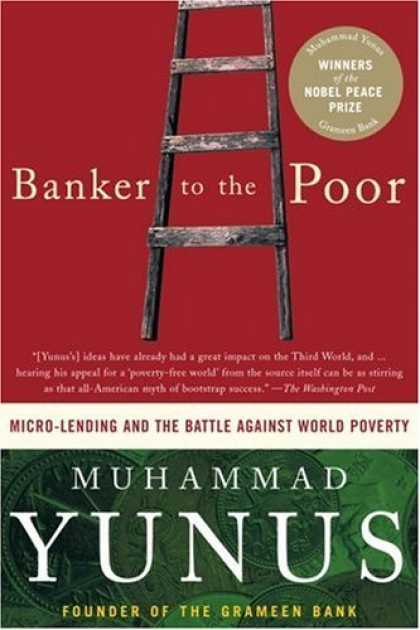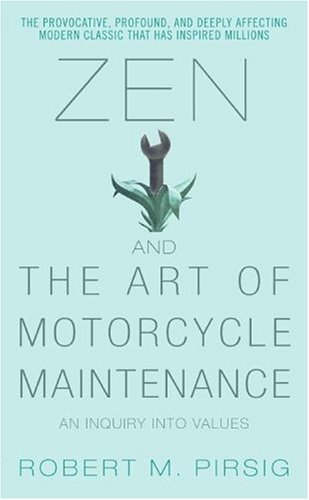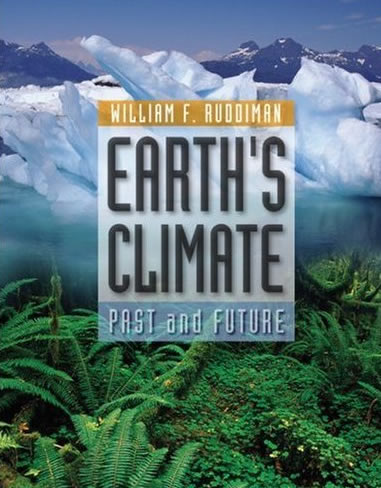A little girl was helping her mother in the kitchen. She wrinkled her nose, looked up at her mother and asked "Mommy, why do you always cut off the end of the ham before you cook it?" The mother paused for a second, looked earnestly at her daughter and said "I don't know. That's the way my mother always did it." The next time they took a trip to Grandma's house the little girl tugged at her grandmother's apron and asked "Why do you cut off the end of the ham before you cook it?" The grandmother's response was the same. "Well, that's what my mother always did." The great-grandmother wasn't alive anymore, but there was a great uncle who still came to thanksgiving dinner. That November, the little girl made sure to ask her uncle why his sister would cut off the end of the ham before cooking it. He thought long and hard, and finally began to chuckle, "Well dear, the pan we had was too small for the whole ham, so she would cut off the end to make it fit."One of Isaac Newton's contributions to the scientific field is told as "Why is not the question, but how" This separated philosophers and theologians from scientists. However, I think that today, especially in the fields of biology and chemistry, it is just as important to ask why as it is to ask how. By knowing why a certain step in the synthesis exists, not just the recipe for how to make the compound, you will understand your system more fully which, if nothing else, makes you more efficient. In making my own bread instead of buying it, which I've started doing, this is important as well. Today, I saved two loaves of bread by not adding the salt directly as the recipe requested which would have killed the yeast but combining it with half the flour and adding that after the water-yeast-flour mixture had rested for twenty minutes. Maybe there are two questions, How and Why!
Saturday, February 28, 2009
Isaac Newton was Wrong
Well, about a lot of things, but this is something that most people don't think of. I recently read this story. I'm not sure if its true or illustrative, but I don't think it really matters.
Wednesday, February 25, 2009
Octopi are amazing!
I saw this video on Ted-Talks a few weeks ago. I've watched this video about 20 times since and I still wouldn't know there was an octopus there if I were the diver. An octopus can change its texture, shape, and color in order to camouflage with its surroundings. I wasn't able to find details on the mechanism, but if scientists could mimic that process and incorporate it into clothing the applications would be endless. Even if its not physically possible, someone in Hollywood should make a private investigator Octopus-man hero out of it.
Also, I think this is the first time I've seen an octopus actually squirt ink.
Sunday, February 22, 2009
Hydrogen vs. Batteries
With dwindling oil and natural reserves, rising prices, and increasing atmospheric concentrations of carbon dioxide, the future of the automobile industry will have to involve a type of fuel besides gasoline.
I've always envisioned electric cars run on batteries. These batteries would be charged from the existing power grid (with increased transmission lines to deal with the additional load). The electricity could be generated by renewable and sustainable energy sources such as wind, and solar power.
However, it was recently pointed out to me that hydrogen might be a more viable option because it has a much larger energy density than batteries. This is certainly true by mass (hydrogen has 39.7 kWh/kg vs. about 0.2 kWh/kg for a battery). Energy density by mass is important in powering cars because lighter cars take less power and can go faster (although if a car is too light it can be dangerous). Hydrogen's energy density by volume is 100x less than that of batteries when uncompressed. However, current hydrogen cars use tanks compressed to 5,000 or 10,000 psi which brings hydrogen's energy density up to 1.1-2.2 kWh/L vs. the 0.3 kWh/L for batteries.

So at first glance, hydrogen seems like a lot better way of storing energy in a car than a battery, but I wondered if this would still be true if you took into account the efficiency of running a car on hydrogen instead of electricity, the weight of the hydrogen tanks, or the energy it takes to make all this hydrogen. Hydrogen storage would be a major problem if hydrogen is to be produced outside the car and held at fueling stations so many are proposing a "regenerative" hydrogen fuel cell mechanism which uses solar or wind power to create hydrogen on the vehicle via electrolysis and later consume it as fuel. I decided to calculate the "true" efficiencies of five systems: 1. Hydrogen at 5000 psi reacted in a PEM fuel cell to form electricity used to power an
electric motor
2. Hydrogen at 5000 psi combusted in an internal combustion engine
3. Electricity stored in a Lithium-ion polymer battery and then used to power an
electric motor
4. Hydrogen at 5000 psi formed via electrolysis in, reacted in a PEM fuel cell to create
electricity used to power an electric motor
5. Hydrogen at 5000 psi formed via electrolysis in and then combusted in an internal
combustion engine
I chose a PEM fuel cell because they currently have the best power to weight and volume ratios. Low temperature fuel cells like the PEM currently need platinum to catalyze the reduction reaction. I've heard that there is not enough platinum on earth to use these fuel cells in cars - although some researchers in Australia claim that they can use gortex as a substitue for platinum. I chose a lithium-ion polymer battery because they are one of the lightest batteries around and have high efficiencies. Both of these technologies are priced competitively in relation to other fuel cells and batteries respectively.
The true efficiencies of the first three systems are plotted below both by volume and by mass.


While only considering the energy efficiency of the car, hydrogen has a higher energy density than batteries both on a mass and a volume basis. Even combusting hydrogen in an internal engine would be better than using batteries.
The true efficiencies of the systems 3-5 are plotted below both by volume and by mass.


If hydrogen would need to be produced and compressed on board, using batteries has a higher energy density than combusting hydrogen. Although creating and reacting hydrogen in a fuel cell still has a higher energy density by volume than using Li-polymer batteries, Li-Polymer batteries have a higher energy density by weight, which is arguably more important in automobiles. For these calculations I didn't consider the volume of the gas compressor, or the weight and volume of the PV cells/wind power
So what does this mean for the future? Well as with most things in life, financial cosiderations are a key player in decision making. However, since I'm not really interested in money, I'm didn't consider that. From my non-monetary analysis, I've reached the following conclusions:
1. Using hydrogen as fuel is only a viable option if we are going to invest in a complete hydrogen economy with fueling stations, hydrogen production plants, wind and solar energy to provide the electricity for hydrolysis, etc. Creating a cars which produce hydrogen onboard is not a viable option unless the weight of fuel cells, compressors, and gas storage tanks decrease sufficiently, or if the hydrogen system is sufficiently cheaper than a battery system. Of course there are also safety issues associated with sitting on a 5000 psi tank of hydrogen.
2. If we are not going to invest in a complete hydrogen economy, it is energetically best to store electricity directly in batteries. This electricity could be created onboard or at a power plant whichever is more cost effective. There are also safety issues associated the production and disposal of massive amounts of batteries full of corrosive, toxic materials.
Personally, I think that it is not realistic to think that hydrogen production on a mass scale with hydrogen stations etc. will exist in the near future. That would require large scale orchestration and high capital costs, which, considering the state of the economy, is not likely. There would need to be large infrastructure changes for electric cars as well. More solar and wind farms to generate electricity, as well as more transmission lines to transport this electricity are both important. President Obama announced that all three of these things are part of the recovery package that was recently passed, so we are well our way.
It is important that our options which offer small scale changes and transition stages. A small scale change leading to hydrogen cars would be to make hydrogen cars which make their own hydrogen on board. However, I have shown that it is currently better to use batteries for this purpose. Since this is the case, electric cars are more likely to initially take off than hydrogen cars, I believe that electric cars are the way of the future.
I've always envisioned electric cars run on batteries. These batteries would be charged from the existing power grid (with increased transmission lines to deal with the additional load). The electricity could be generated by renewable and sustainable energy sources such as wind, and solar power.
However, it was recently pointed out to me that hydrogen might be a more viable option because it has a much larger energy density than batteries. This is certainly true by mass (hydrogen has 39.7 kWh/kg vs. about 0.2 kWh/kg for a battery). Energy density by mass is important in powering cars because lighter cars take less power and can go faster (although if a car is too light it can be dangerous). Hydrogen's energy density by volume is 100x less than that of batteries when uncompressed. However, current hydrogen cars use tanks compressed to 5,000 or 10,000 psi which brings hydrogen's energy density up to 1.1-2.2 kWh/L vs. the 0.3 kWh/L for batteries.

So at first glance, hydrogen seems like a lot better way of storing energy in a car than a battery, but I wondered if this would still be true if you took into account the efficiency of running a car on hydrogen instead of electricity, the weight of the hydrogen tanks, or the energy it takes to make all this hydrogen. Hydrogen storage would be a major problem if hydrogen is to be produced outside the car and held at fueling stations so many are proposing a "regenerative" hydrogen fuel cell mechanism which uses solar or wind power to create hydrogen on the vehicle via electrolysis and later consume it as fuel. I decided to calculate the "true" efficiencies of five systems: 1. Hydrogen at 5000 psi reacted in a PEM fuel cell to form electricity used to power an
electric motor
2. Hydrogen at 5000 psi combusted in an internal combustion engine
3. Electricity stored in a Lithium-ion polymer battery and then used to power an
electric motor
4. Hydrogen at 5000 psi formed via electrolysis in, reacted in a PEM fuel cell to create
electricity used to power an electric motor
5. Hydrogen at 5000 psi formed via electrolysis in and then combusted in an internal
combustion engine
I chose a PEM fuel cell because they currently have the best power to weight and volume ratios. Low temperature fuel cells like the PEM currently need platinum to catalyze the reduction reaction. I've heard that there is not enough platinum on earth to use these fuel cells in cars - although some researchers in Australia claim that they can use gortex as a substitue for platinum. I chose a lithium-ion polymer battery because they are one of the lightest batteries around and have high efficiencies. Both of these technologies are priced competitively in relation to other fuel cells and batteries respectively.
The true efficiencies of the first three systems are plotted below both by volume and by mass.


While only considering the energy efficiency of the car, hydrogen has a higher energy density than batteries both on a mass and a volume basis. Even combusting hydrogen in an internal engine would be better than using batteries.
The true efficiencies of the systems 3-5 are plotted below both by volume and by mass.


If hydrogen would need to be produced and compressed on board, using batteries has a higher energy density than combusting hydrogen. Although creating and reacting hydrogen in a fuel cell still has a higher energy density by volume than using Li-polymer batteries, Li-Polymer batteries have a higher energy density by weight, which is arguably more important in automobiles. For these calculations I didn't consider the volume of the gas compressor, or the weight and volume of the PV cells/wind power
So what does this mean for the future? Well as with most things in life, financial cosiderations are a key player in decision making. However, since I'm not really interested in money, I'm didn't consider that. From my non-monetary analysis, I've reached the following conclusions:
1. Using hydrogen as fuel is only a viable option if we are going to invest in a complete hydrogen economy with fueling stations, hydrogen production plants, wind and solar energy to provide the electricity for hydrolysis, etc. Creating a cars which produce hydrogen onboard is not a viable option unless the weight of fuel cells, compressors, and gas storage tanks decrease sufficiently, or if the hydrogen system is sufficiently cheaper than a battery system. Of course there are also safety issues associated with sitting on a 5000 psi tank of hydrogen.
2. If we are not going to invest in a complete hydrogen economy, it is energetically best to store electricity directly in batteries. This electricity could be created onboard or at a power plant whichever is more cost effective. There are also safety issues associated the production and disposal of massive amounts of batteries full of corrosive, toxic materials.
Personally, I think that it is not realistic to think that hydrogen production on a mass scale with hydrogen stations etc. will exist in the near future. That would require large scale orchestration and high capital costs, which, considering the state of the economy, is not likely. There would need to be large infrastructure changes for electric cars as well. More solar and wind farms to generate electricity, as well as more transmission lines to transport this electricity are both important. President Obama announced that all three of these things are part of the recovery package that was recently passed, so we are well our way.
It is important that our options which offer small scale changes and transition stages. A small scale change leading to hydrogen cars would be to make hydrogen cars which make their own hydrogen on board. However, I have shown that it is currently better to use batteries for this purpose. Since this is the case, electric cars are more likely to initially take off than hydrogen cars, I believe that electric cars are the way of the future.
Friday, February 20, 2009
Will it Blend?
I've been hesitant to write my first blog post until I found something really worthy, something that would say "This is not a mundane blog. Nay, it is unique and colorful!" So after a week of living and searching the interwebs I've found it.
Although the power of this blender is impressive, perhaps even more incredible is the amount of things this single man has blended. The list includes pretty much everything you can think of: lighters, glow sticks, a golf club, cellphones, ipods, a bottle of beer, and my personal favorite...cochicken.
He also takes requests. Brilliant. Just brilliant. Tom Dickson, you truly are a hero.
Although the power of this blender is impressive, perhaps even more incredible is the amount of things this single man has blended. The list includes pretty much everything you can think of: lighters, glow sticks, a golf club, cellphones, ipods, a bottle of beer, and my personal favorite...cochicken.
He also takes requests. Brilliant. Just brilliant. Tom Dickson, you truly are a hero.
Subscribe to:
Posts (Atom)

 Banker to the Poor
Banker to the Poor A Walk Across America
A Walk Across America Catch 22
Catch 22 Dreams from My Father
Dreams from My Father Against the Grain: How Agriculture has Hijacked Civilization
Against the Grain: How Agriculture has Hijacked Civilization Born to Run
Born to Run Deep Economy
Deep Economy A Long Trek Home
A Long Trek Home Lord of the Rings: Return of the King
Lord of the Rings: Return of the King Black Like Me
Black Like Me Guns, Germs, and Steel
Guns, Germs, and Steel White Teeth
White Teeth Water for Elephants
Water for Elephants Lord of the Rings: The Two Towers
Lord of the Rings: The Two Towers Pedagogy of the Oppressed
Pedagogy of the Oppressed A Walk in the Woods
A Walk in the Woods A Separate Peace
A Separate Peace Seize the Day
Seize the Day The Ugly American
The Ugly American The Amazing Adventures of Kavalier & Clay
The Amazing Adventures of Kavalier & Clay Going Home to Teach
Going Home to Teach  The Color Purple
The Color Purple  The Dead Yard: Tales of Modern Jamaica
The Dead Yard: Tales of Modern Jamaica  Brief Interviews with Hideous Men
Brief Interviews with Hideous Men  Zen and the Art of Motorcycle Maintenance
Zen and the Art of Motorcycle Maintenance  East of Eden
East of Eden  Walden
Walden  The Omnivore's Dilemma
The Omnivore's Dilemma  Earth's Climate: Past and Future
Earth's Climate: Past and Future  You Can Farm: The Entrepreneur's Guide to Start and Succeed in a Farming Enterprise
You Can Farm: The Entrepreneur's Guide to Start and Succeed in a Farming Enterprise